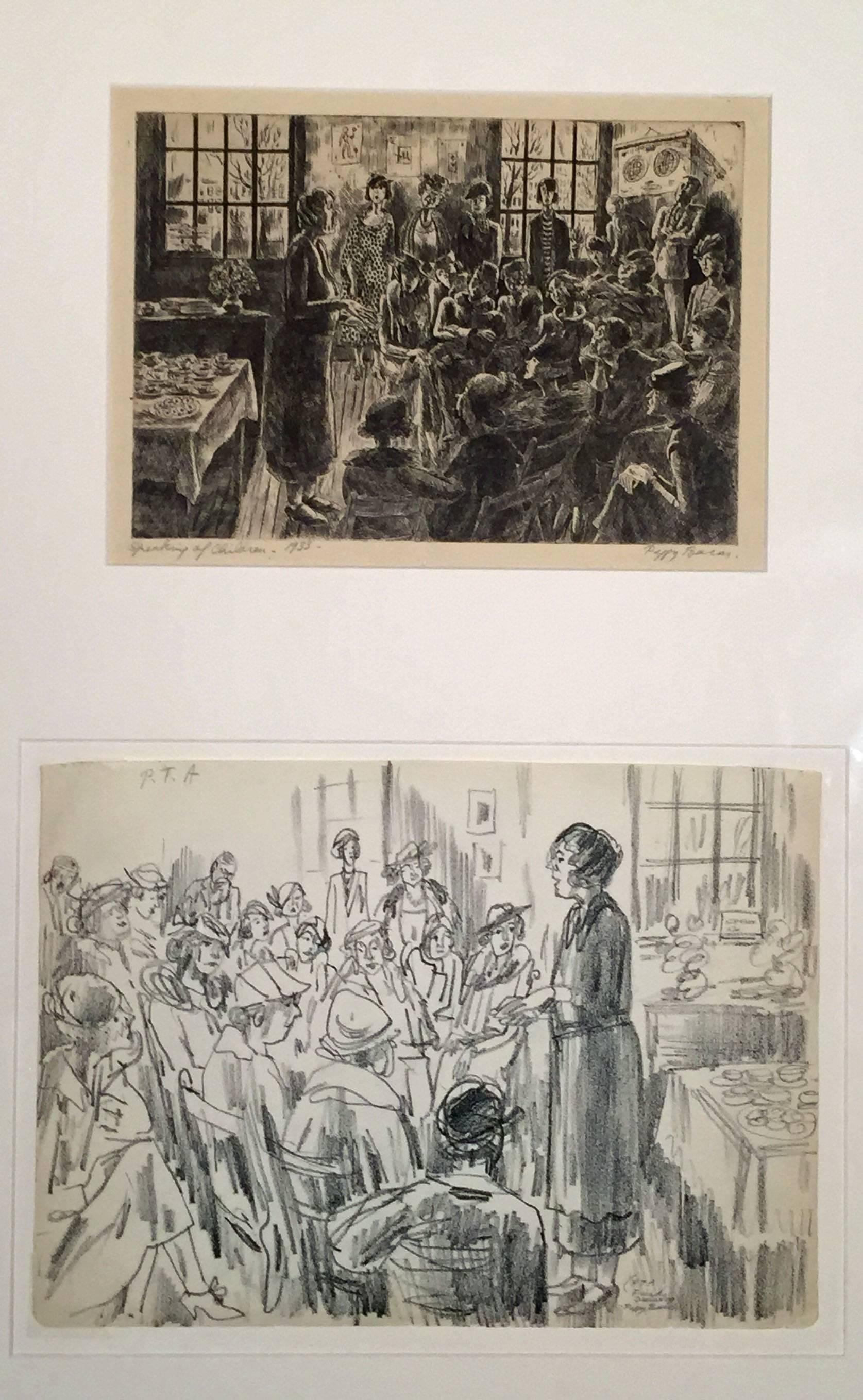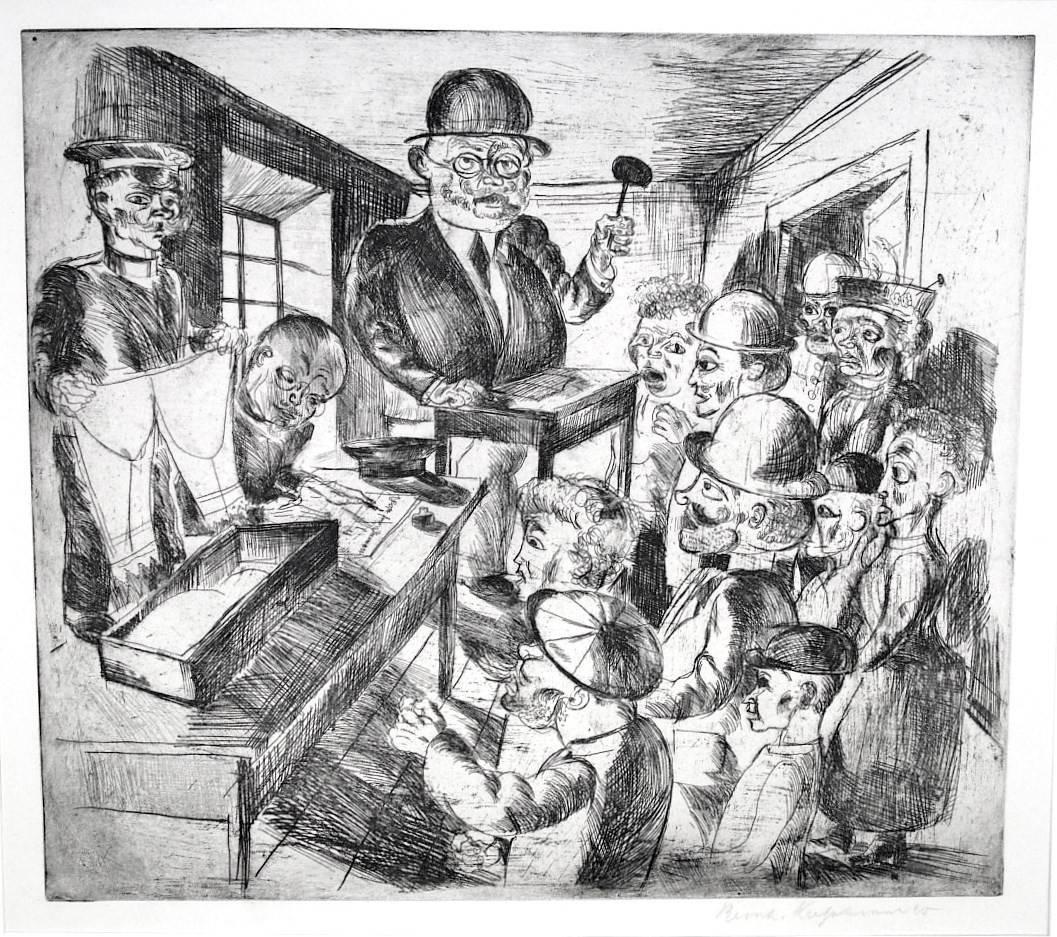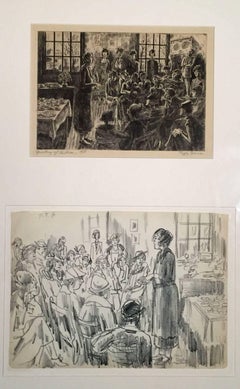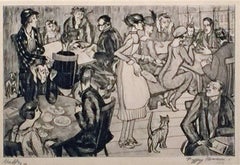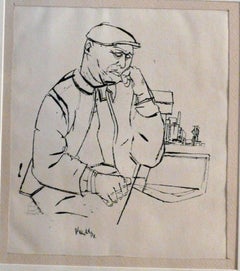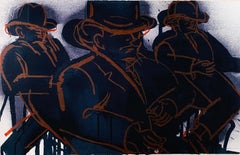Want more images or videos?
Request additional images or videos from the seller
1 of 5
Peggy BaconTHE CLINIC1932
1932
$3,500
£2,724.98
€3,099.09
CA$5,034.65
A$5,531.45
CHF 2,890.77
MX$65,967.17
NOK 36,605
SEK 34,100.64
DKK 23,157.88
About the Item
Bacon, Peggy. THE CLINIC. Flint 109. Drypoint, 1932. Edition size not known, but likely very small as the print is rare. 4 15/16 x 6 7/8 inches, plus wide margins (the sheet is 11 x 11 3/4 inches). Signed, titled and dated in pencil. In excellent condition with deckled edges, and with the artist's tack-holes for drying, near the edges, all around.
- Creator:Peggy Bacon (1895-1987, American)
- Creation Year:1932
- Dimensions:Height: 20 in (50.8 cm)Width: 16 in (40.64 cm)
- Medium:
- Movement & Style:
- Period:
- Condition:
- Gallery Location:Portland, ME
- Reference Number:Seller: 120591stDibs: LU36731153273
About the Seller
5.0
Recognized Seller
These prestigious sellers are industry leaders and represent the highest echelon for item quality and design.
Platinum Seller
Premium sellers with a 4.7+ rating and 24-hour response times
Established in 1966
1stDibs seller since 2016
358 sales on 1stDibs
Typical response time: 1 hour
Associations
International Fine Print Dealers Association
- ShippingRetrieving quote...Shipping from: Portland, ME
- Return Policy
More From This Seller
View AllSPEAKING OF CHILDREN and PTA FRIEND'S SEMINARY
By Peggy Bacon
Located in Portland, ME
Bacon, Peggy. SPEAKING OF CHILDREN and PTA FRIEND'S SEMINARY. Flint 120. Etching, 1933, together with a preparatory drawing, titled "PTA Friend's Seminary." The etching titled, dated an signed in pencil. The edition size is not known, but likely small as the print is uncommon; there are no auction...
Category
1930s American Modern Figurative Prints
Materials
Etching
HATTY
By Peggy Bacon
Located in Portland, ME
Bacon, Peggy.
HATTY. Flint 48. Drypoint, 1921.
Titled, signed and dated in pencil.
5 1/2 x 8 7/16 inches (plate), 9 5/16 x 12 1/2 inches (sheet).
In excellent condition.
"A rest...
Category
1920s Figurative Prints
Materials
Etching
$2,250
UNTITLED PORTRAIT
By John Heliker
Located in Portland, ME
Heliker, John. (American, 1909-2000). UNTITLED PORTRAIT. Ink on paper, not dated, likely 1930s. The image is of a man, likely a factory worker, seated, wearing a cap, leaning his face on one hand, with factory structures in the background. Signed, lower right. c. 8 x 8 inches 0n a larger sheet. In excellent condition.
Heliker was born in Yonkers and spent his adult life dividing his time between Manhattan, where he taught art for decades, and Great Cranberry Island...
Category
Mid-20th Century American Modern Portrait Drawings and Watercolors
Materials
Ink
CITY SCENE
By Lester Johnson
Located in Portland, ME
Johnson, Lester (American, 1919-2010). CITY SCENE. Lithograph, 1970. Edition of 20. Signed in pencil and numbered "3/20." 19 1/4 x 30 inches (image/sheet),...
Category
1970s Figurative Prints
Materials
Lithograph
ASTOR LOBBY, SHOWTIME
By Don Freeman
Located in Portland, ME
Freeman, Don (American, 1908-1978). ASTOR LOBBY,SHOWTIME. McCulloch 34. Lithograph, 1932. Edition of 30 or fewer. Signed in pencil lower right. 8 7/8 x 11 1/8, 225 x 283 mm.(image), ...
Category
1930s Figurative Prints
Materials
Lithograph
EN LA NEVERA
By Isadoro Ocampo
Located in Portland, ME
Ocampo, Isidoro. EN LA NEVERA. Drypoint, 1929. Edition of 50, numbered 3/50 and signed in pencil. 9 1/2 x 6 3/4 inches. Printed on paper watermaked "F.J. Head & Co." In excellent con...
Category
1920s Figurative Prints
Materials
Drypoint
You May Also Like
At the Show
By Jerome Myers
Located in New York, NY
Jerome Myers (1867-1940), At the Show, etching and drypoint, c. 1920, signed in pencil lower right. In good condition, with margins (paper losses upper corners), faint ink marks and ...
Category
1920s American Realist Figurative Prints
Materials
Drypoint, Etching
The Jury
By Charles Bragg
Located in San Francisco, CA
This artwork titled "The Jury" c.1980 is an original etching on Wove paper by noted American artist Charles Bragg, 1931-2017. It is hand signed and inscribed "For Ellen" in pencil by...
Category
Late 20th Century Other Art Style Figurative Prints
Materials
Etching
The Jury
By Charles Bragg
Located in San Francisco, CA
This artwork titled "The Jury" c.1980 is an original etching by noted American artist Charles Bragg, 1931-2017. It is hand signed and inscribed H.C (Hors Comm...
Category
Late 20th Century Other Art Style Figurative Prints
Materials
Etching
The Internist
By Charles Bragg
Located in San Francisco, CA
This artwork titled "The Internist" c.1975 is an original etching by noted American artist Charles Bragg, 1931-2017. It is hand signed, titled and numbered 130/300 in pencil by the a...
Category
Late 20th Century Other Art Style Figurative Prints
Materials
Etching
Auction
By Bernhard Kretzschmar
Located in New York, NY
Bernard Kretzschmar (1889-1972), Auction, etching, drypoint, and burnished aquatint, 1921, signed and dated (’20) in pencil lower right [also initialed in the plate lower left] Refe...
Category
1920s Expressionist Figurative Prints
Materials
Drypoint, Etching, Aquatint
The Fifth Day
By Charles Bragg
Located in San Francisco, CA
This artwork "The Fifth Day" c.1980 is an original color etching by noted American artist Charles Bragg, 1931-2017. It is hand signed, titled and inscribed HC in pencil by the artist...
Category
Late 20th Century Other Art Style Figurative Prints
Materials
Etching
More Ways To Browse
Scorpio Art
Signed Chagall Print
Signed Prints By Dali
Simbari Lithograph
Star Legend
Sumo Print
Used Pacemaker
William Temple
Alexej Von Jawlensky
Alice In Wonderland Prints Vintage
Barbizon Etchings
Chagall Flowers
Chagall Galerie Maeght
Chagall Lithograph Ruth Boaz
Chagall Ruth And Boaz
Circus Ring
Crepax Valentina
David Hockney Brothers Grimm
